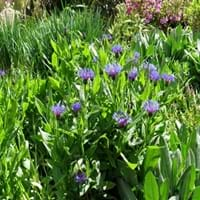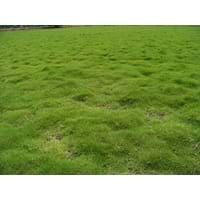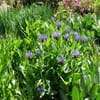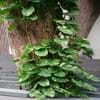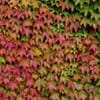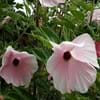Life Span
Annual and Perennial
Perennial
Type
Flowering Plants, Shrubs
Grass
Origin
World/Pandemic, North America, Europe, Russia/Siberia, China, Korea
South-Eastern Asia, Asia
Types
Bigleaf hydrangea, Hortensia, Smooth hydrangea, Oakleaf hydrangea, Annabelle
Korean Lawngrass , Meyer Zoysiagrass , Manilagrass
Habitat
Forest edges, Hillside, Woods
Lower slopes, Sandy stream banks
USDA Hardiness Zone
2-11
8-11
AHS Heat Zone
7 - 1
12 - 9
Sunset Zone
Not Available
H1, H2, 8, 9, 12, 13, 14, 15, 16, 17, 18, 19, 20, 21, 22, 23, 24
Habit
Upright/Erect
Clump-Forming
Minimum Width
Not Available
Flower Color
Blue, Sky Blue, Indigo, Dark Blue
Green, Light Green
Flower Color Modifier
Bicolor
Bicolor
Fruit Color
Brown, Sandy Brown
Non Fruiting Plant
Leaf Color in Spring
Sea Green, Gray Green
Light Green, Dark Green
Leaf Color in Summer
Sea Green, Gray Green
Light Green
Leaf Color in Fall
Sea Green, Gray Green
Green, Yellow green, Gold
Leaf Color in Winter
Light Green
Gold, Tan
Leaf Shape
Oblovate
Grass like
Plant Season
Spring, Summer, Fall
Spring, Summer, Fall, Winter
Sunlight
Full Sun, Partial Sun
Full Sun, Partial Sun
Growth Rate
Very Fast
Very Slow
Type of Soil
Loam, Sand
Loam, Sand
The pH of Soil
Acidic, Neutral, Alkaline
Acidic, Neutral, Alkaline
Soil Drainage
Well drained
Average
Bloom Time
Indeterminate
Not Available
Tolerances
Drought
Drought, Salt, Soil Compaction
Where to Plant?
Container, Ground, Pot
Ground
How to Plant?
Seedlings
Sod, Sprigging or Stolonizing
Plant Maintenance
Medium
Medium
Watering Requirements
Keep ground moist, Requires a lot of watering, Requires regular watering, Requires watering in the growing season
weekly regular
In Summer
Lots of watering
Lots of watering
In Spring
Moderate
Moderate
In Winter
Average Water
Average Water
Soil pH
Slightly Acidic
Acidic, Neutral, Alkaline
Soil Type
Loamy
Loam, Sand
Soil Drainage Capacity
Loamy
Average
Sun Exposure
Full Sun
Full Sun, Partial Sun
Pruning
Prune to control growth, Remove damaged leaves, Remove dead branches, Remove dead leaves
Remove damaged leaves, Remove dead branches, Remove dead leaves
Fertilizers
Compost
All-Purpose Liquid Fertilizer
Pests and Diseases
Bacterial leaf spot, Botrytis Blight, Leafminers, Mealybugs, Mushroom root rot
Army-worms, sod webworms
Plant Tolerance
Drought
Drought
Flowers
Showy
Insignificant
Flower Petal Number
Single
Single
Foliage Texture
Medium
Fine
Foliage Sheen
Matte
Matte
Attracts
Butterflies
Crickets
Allergy
Chest tightness, Diarrhea, Dizziness, Nausea, Vomiting
Not Defined
Aesthetic Uses
Beautification, Bouquets, Landscape Designing, Showy Purposes
Beautification, Cottage Garden, Farmland, Ground Cover, Landscape Designing
Beauty Benefits
Not Available
Not Available
Environmental Uses
Air purification, Food for insects, Indoor Air Purification, Prevent Soil Erosion, Very little waste
Provides ground cover, soil erosion prevension on hill slopes
Medicinal Uses
Fever, Kidney problems, Urinary tract problems
Unknown
Part of Plant Used
Flowers, Root
Whole plant
Other Uses
Can be made into a herbal tea, Decoration Purposes, Employed in herbal medicine, Showy Purposes, Used as Ornamental plant, Used for its medicinal properties
Used as a golf course turf
Used As Indoor Plant
Yes
Insignificant
Used As Outdoor Plant
Yes
Yes
Garden Design
Container, Herb
Container, Edging, Groundcover, Lawns and Turf, Mixed Border, Rock Garden / Wall, Tropical
Botanical Name
CENTAUREA cyanus
ZOYSIA tenuifolia
Common Name
Batchelor's Buttons, Cornflower
Korean Velvet Grass
In Hindi
Hydrangea
कोरियाई मखमल घास
In German
Hortensie
Korean Samt Gras
In French
Hortensia
herbe de velours coréenne
In Spanish
Hortensia
hierba de terciopelo de Corea
In Greek
υδραγεία
hierba de terciopelo de Corea
In Portuguese
Hortênsia
grama de veludo coreano
In Polish
Hortensja
Not Available
In Latin
Hibiscus
Carl herba
Phylum
Anthophyta
Angiosperms
Class
Magnoliopsida
Monocotyledonae
Order
Asterales
Cyperales
Family
Asteraceae
Poaceae
Genus
Centaurea
Zoysia Willd
Clade
Angiosperms, Asterids, Eudicots
Commelinids
Tribe
Cynareae
Cynodonteae
Subfamily
Carduoideae
Chloridoideae
Number of Species
Not Available
Importance of Cornflower and Korean Velvet Grass
Want to have the most appropriate plant for your garden? You might want to know the importance of Cornflower and Korean Velvet Grass. Basically, these two plants vary in many aspects. Compare Cornflower and Korean Velvet Grass as they differ in many characteristics such as their life, care, benefits, facts, etc. Every gardener must at least have the slightest clue about the plants he wants to plant in his garden. Compare their benefits, which differ in many ways like facts and uses. The medicinal use of Cornflower is Fever, Kidney problems and Urinary tract problems whereas of Korean Velvet Grass is Unknown. Cornflower has beauty benefits as follows: Not Available while Korean Velvet Grass has beauty benefits as follows: Not Available.
Compare Facts of Cornflower vs Korean Velvet Grass
How to choose the best garden plant for your garden depending upon its facts? Here garden plant comparison will help you to solve this query. Compare the facts of Cornflower vs Korean Velvet Grass and know which one to choose. As garden plants have benefits and other uses, allergy is also a major drawback of plants for some people. Allergic reactions of Cornflower are Chest tightness, Diarrhea, Dizziness, Nausea and Vomiting whereas of Korean Velvet Grass have Not Defined respectively. Having a fruit bearing plant in your garden can be a plus point of your garden. Cornflower has no showy fruits and Korean Velvet Grass has no showy fruits. Also Cornflower is not flowering and Korean Velvet Grass is not flowering . You can compare Cornflower and Korean Velvet Grass facts and facts of other plants too.
